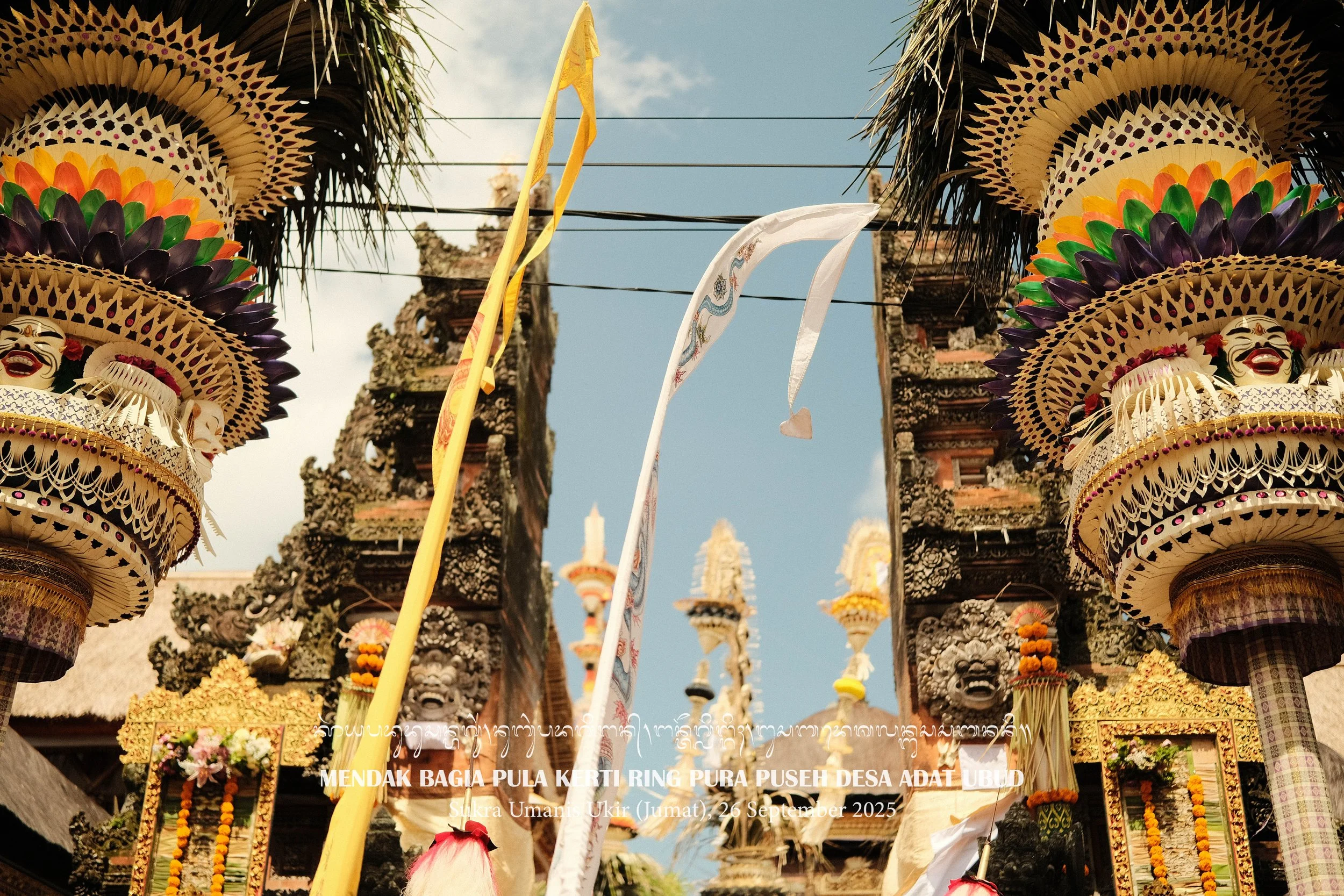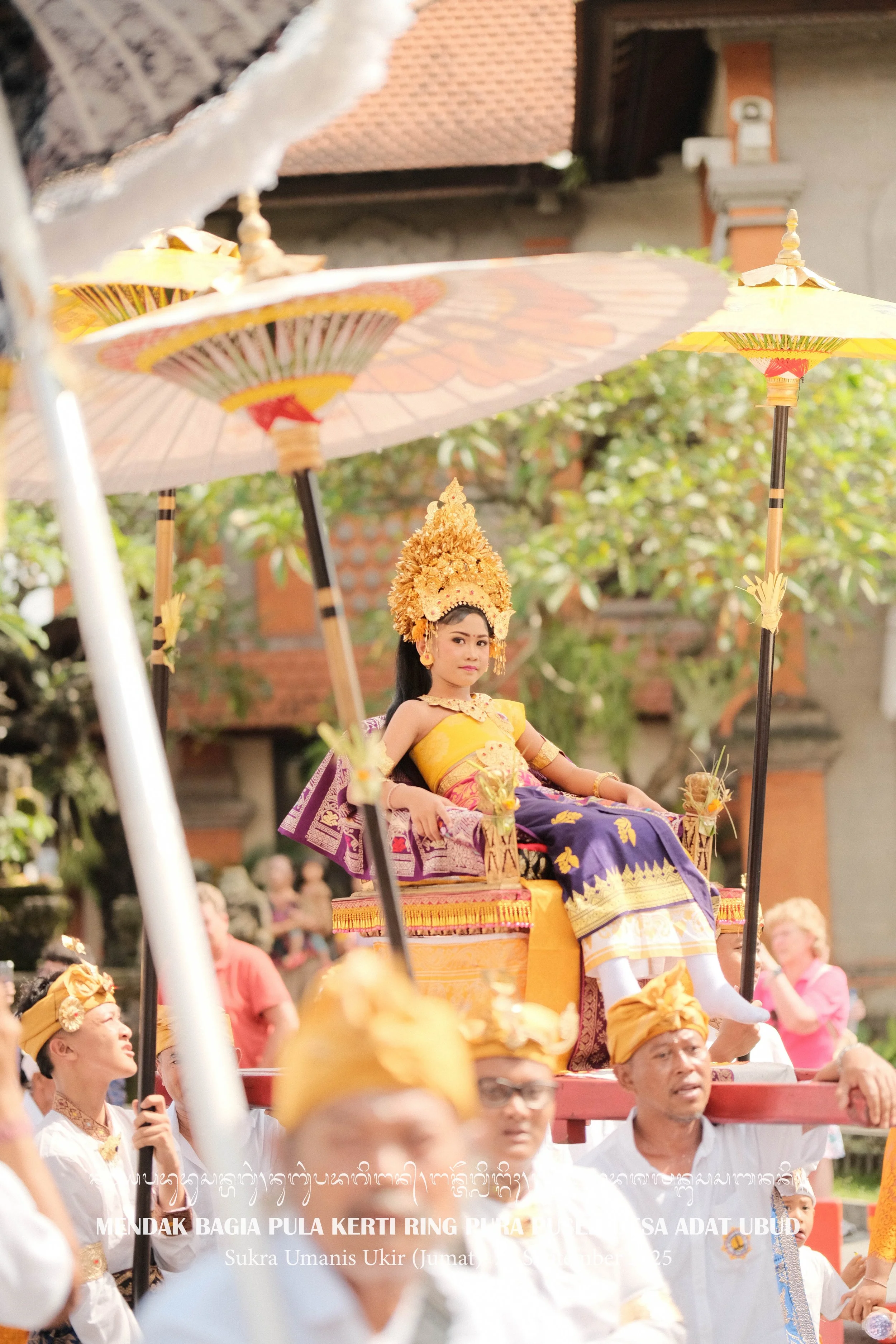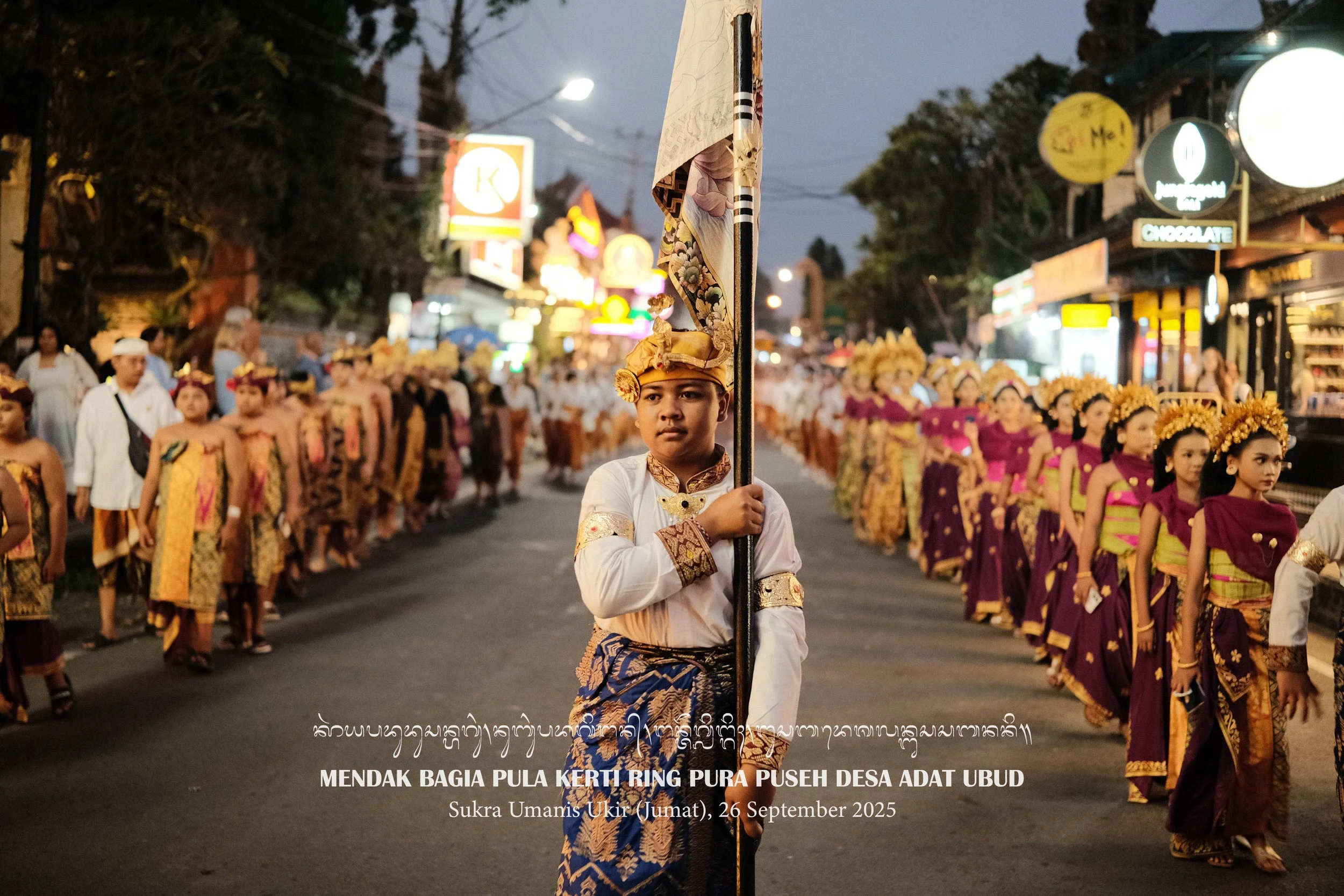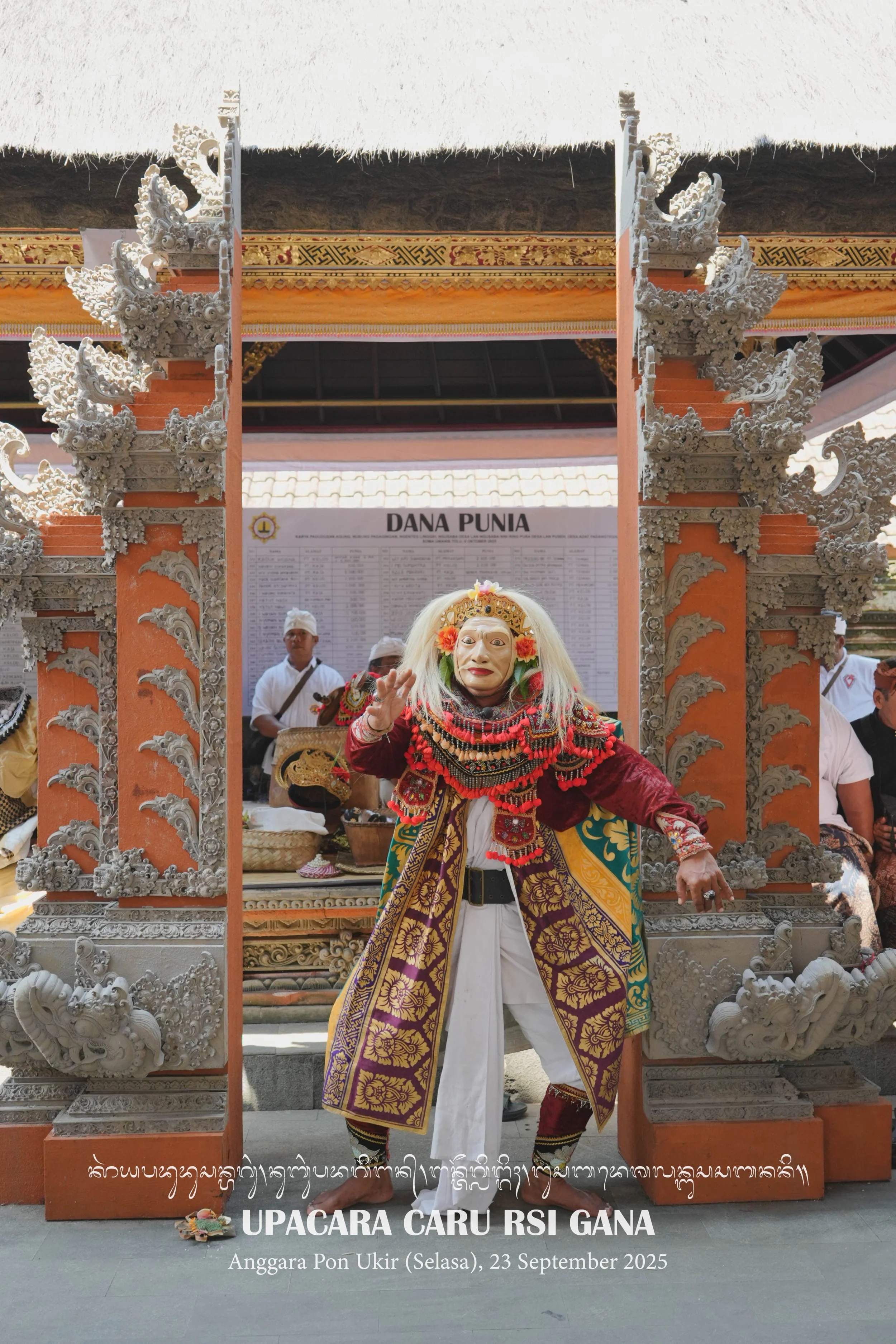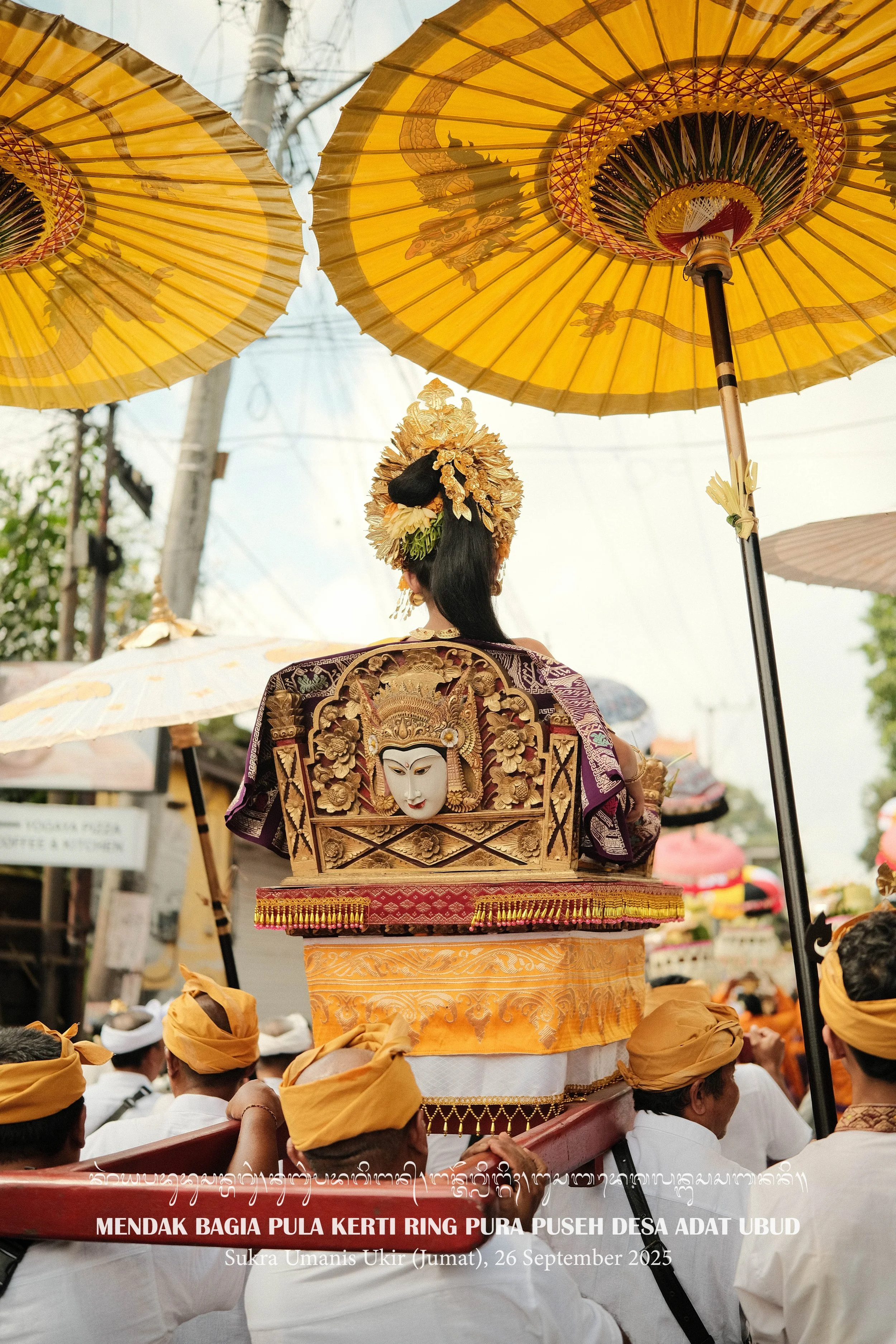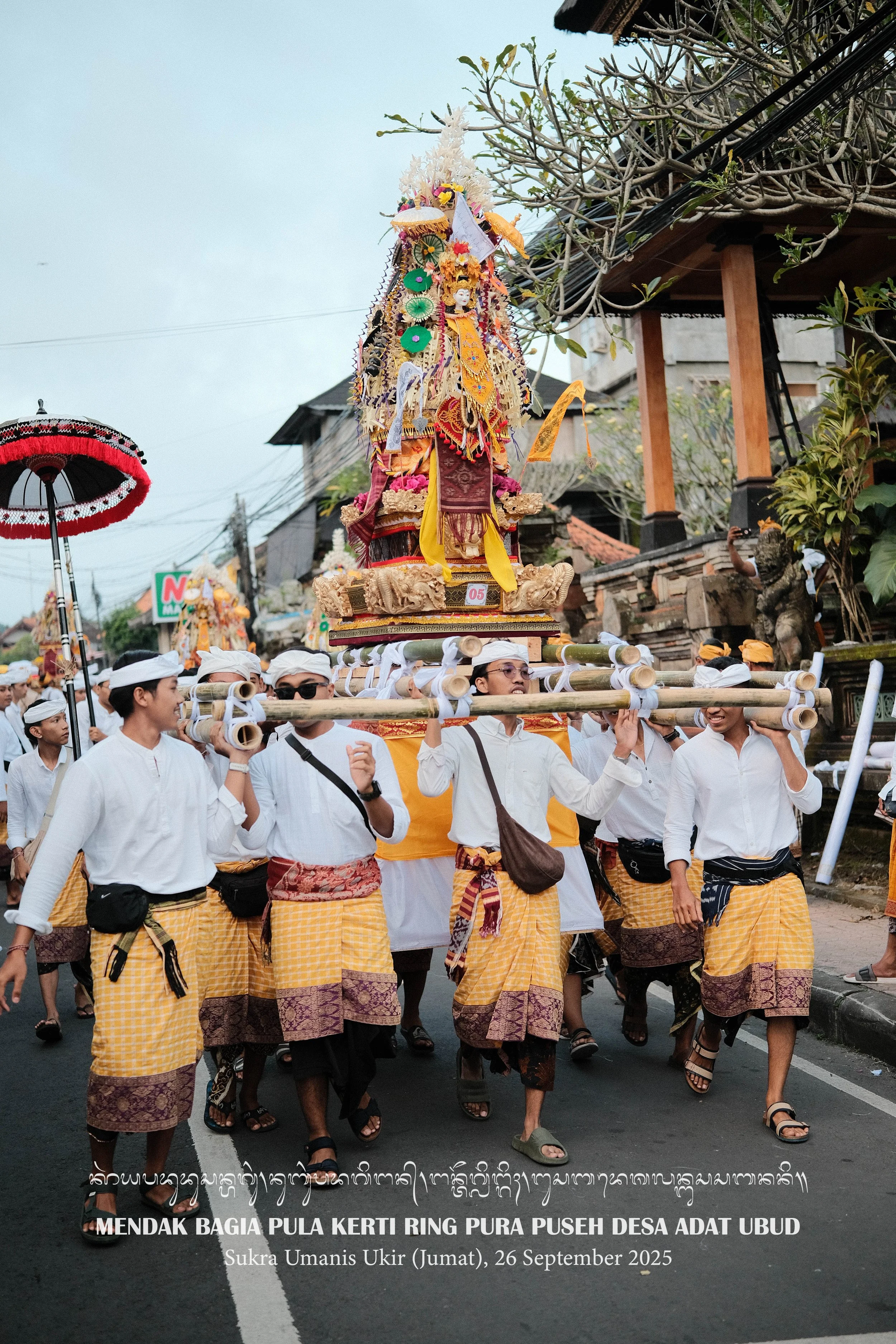How Five Ancient Ceremonies Turn Ubud Into Living Temple
Picture this: every street in Ubud draped in ethereal Penjor bamboo arches: white ones marking the east side, yellow ones marking the west side, transforming the entire village into a sacred mandala. This October, we're witnessing something that happens only once every three decades, a convergence of five powerful Balinese ceremonies that will turn ordinary days into living prayer.
It starts October 3rd with Tawur Mabumi Sudha Padanan, a vibrant procession that combines two sacred Hindu rituals: Tawur neutralizes negative energies through offerings, while Mabumi Sudha purifies the earth itself to make it worthy for divine presence. Together, they create the spiritual foundation needed for what follows—streets already adorned like celestial pathways preparing for something extraordinary.
Then October 6th brings Karya Padudusan Agung—the grand purification that literally cleanses universal energy. But that's just the beginning.
What follows is like watching spiritual architecture being built in real time: Nubung Pedagingan places sacred essences into temple structures, Ngenteg Linggih awakens dormant power spots, Ngusaba Desa wraps protective energy around the entire village, and Ngusaba Nini specifically safeguards the women who are considered the spiritual anchors of Balinese community.
Each ceremony works like a different instrument in a cosmic orchestra: temple bells, gamelan rhythms, chanted mantras, and incense smoke creating layers of protection that the Balinese believe literally restructure reality itself.
For those of us living here during this rare convergence, we become accidental participants in something ancient and profound. The sacred arches over daily walks create a living temple that includes everyone who passes beneath.
You might feel it: a different quality to the air, dreams that feel more vivid, conversations that go deeper. The Balinese know that when ceremonies this powerful converge, the veil between worlds becomes paper-thin.
Ubud transforms into a spiritual epicenter where we all become temporary participants in the ancient art of tending what's sacred.

